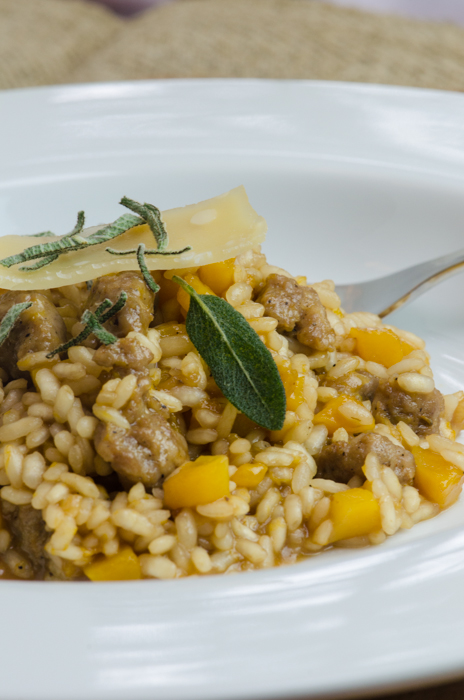 Exploring the countryside of Northern Italy during our walking and cycling tours we find ourselves on one of the only flat plains in this otherwise mountainous country. Here in the marshy areas of the Po River Valley, rice found a natural habitat. The result is a wide array of risotto dishes found in the traditional cuisines of the area, from Risotto alla Milanese in Lombardia to Risotto con Funghi in Trentino-Alto Adige. Verona is a favorite destination of ours, and just south of this lovely city is a farm that still cultivates risotto rice, Antica e Rinomata Riserva Ferron. Their web site gives a thorough overview of the history of this grain in Italy.
Exploring the countryside of Northern Italy during our walking and cycling tours we find ourselves on one of the only flat plains in this otherwise mountainous country. Here in the marshy areas of the Po River Valley, rice found a natural habitat. The result is a wide array of risotto dishes found in the traditional cuisines of the area, from Risotto alla Milanese in Lombardia to Risotto con Funghi in Trentino-Alto Adige. Verona is a favorite destination of ours, and just south of this lovely city is a farm that still cultivates risotto rice, Antica e Rinomata Riserva Ferron. Their web site gives a thorough overview of the history of this grain in Italy.
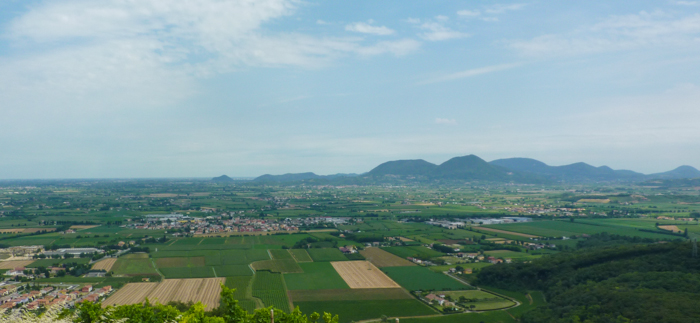 The origin of the cultivation of rice is poorly documented. Some scholars believe it was grown as early as the seventh century BC on the island of Java; others identify China. What is certain is that it spread throughout Asian; from Japan to the Middle East.
The origin of the cultivation of rice is poorly documented. Some scholars believe it was grown as early as the seventh century BC on the island of Java; others identify China. What is certain is that it spread throughout Asian; from Japan to the Middle East.
Rice did not appear on tables in the west until many years later. The Greeks knew the methods of cultivation, thanks to the campaigns of Alexander the Great, but never adopted it in Greece. The Romans knew rice not as food, but as a precious spice used to prepare herbal teas, digestive teas and creams. According to some sources it was the Arabs, and then the Aragonese to introduce it in the south of Italy. According to others it was the Crusaders and the Venetian merchants to introduce it in Italy. Here in the north, it found its home in the flatter wet plains along the Po River in Piedmont, Lombardy and Veneto.
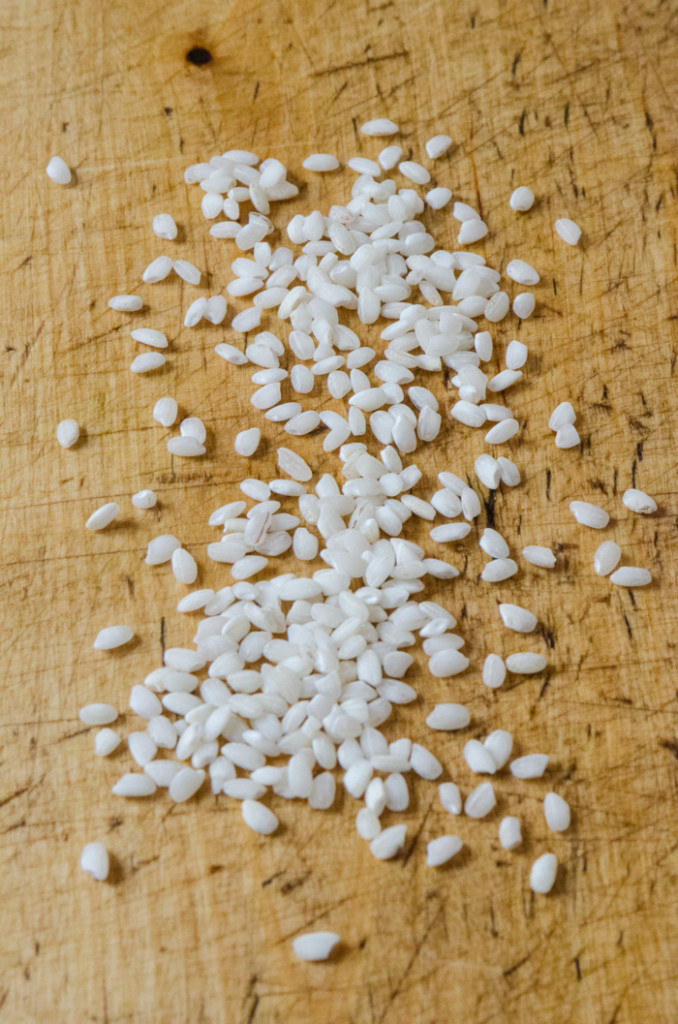 The first firm evidence of the cultivation of rice in Italy is a letter from 1475 in which Gian Galeazzo Sforza, Duke of Milan, sent 12 bags of rice to the Duke of Ferrara so he might taste the product of his lands. In the following centuries constant land reclamation and a new water infrastructure enabled the spread of the rice fields, despite the resistance of the authorities who considered these rich areas of standing water a source of malaria – which was one of the leading causes of death in Italy until the 1950s.
The first firm evidence of the cultivation of rice in Italy is a letter from 1475 in which Gian Galeazzo Sforza, Duke of Milan, sent 12 bags of rice to the Duke of Ferrara so he might taste the product of his lands. In the following centuries constant land reclamation and a new water infrastructure enabled the spread of the rice fields, despite the resistance of the authorities who considered these rich areas of standing water a source of malaria – which was one of the leading causes of death in Italy until the 1950s.
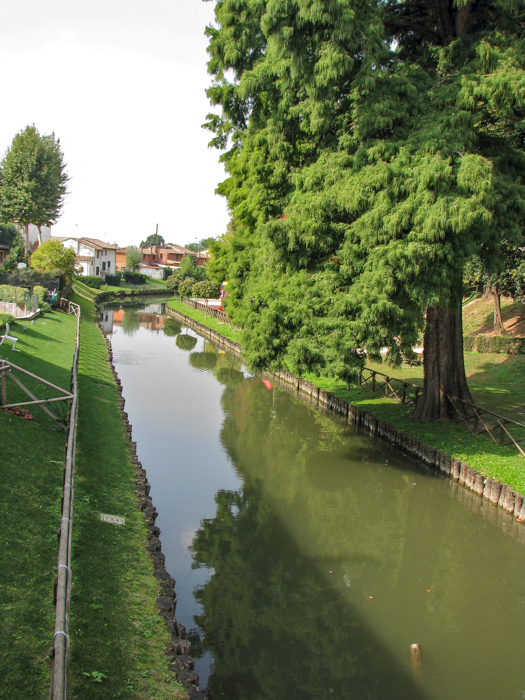 With the opening of the Suez Canal, the Italian production of rice suffered due to the import of cheaper rice from Asia. This continued until the end of World War II, when a growth trend began that brought Italy to a leading position in the European market. In concert with this growth was a resurgence of Italian style rices that possess the unique characteristics required for the best risotto – an extraordinary ability to absorb liquids and seasonings, up to an impressive twice its weight, and a kernel that retains is consistency during cooking, rather than becoming mushy.
With the opening of the Suez Canal, the Italian production of rice suffered due to the import of cheaper rice from Asia. This continued until the end of World War II, when a growth trend began that brought Italy to a leading position in the European market. In concert with this growth was a resurgence of Italian style rices that possess the unique characteristics required for the best risotto – an extraordinary ability to absorb liquids and seasonings, up to an impressive twice its weight, and a kernel that retains is consistency during cooking, rather than becoming mushy.
Riso Vialone Nano Veronese risotto rice emerged as part of this resurgence, and is now the pride of the Veneto region. This risotto rice was created in 1937 by crossing the variety Vialone and Nano: the intention was to reduce the size of the Vialone to avoid the damage caused during harvest. In 1996 Riso Vialone Nano became the first in Europe to boast the IGP.
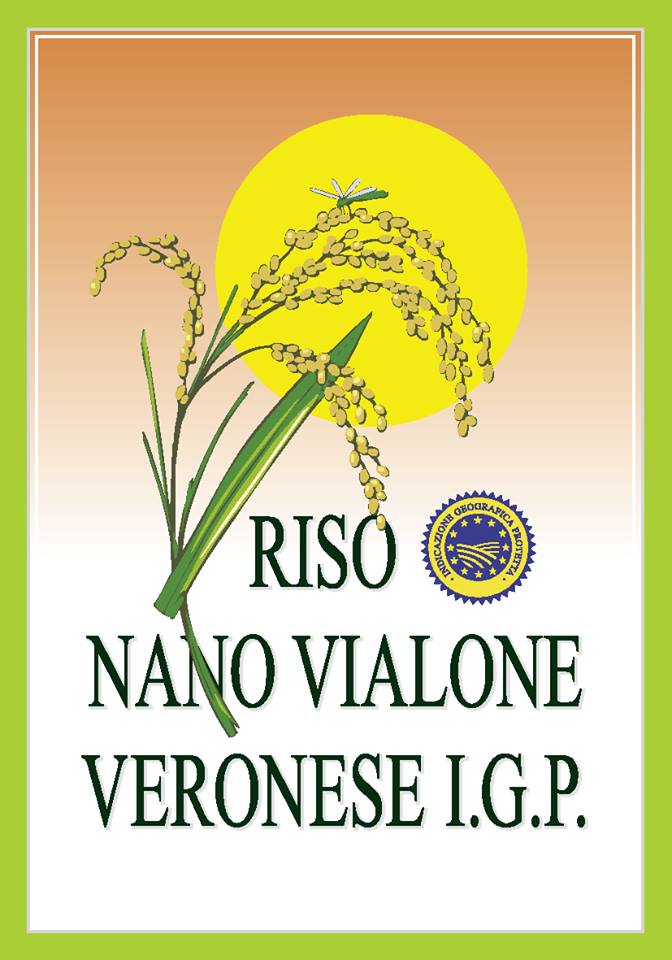 The recipe below is just one example of the main flavors of risotto found in the Veneto. The source is a recipe book put out by one of the region’s tourist boards, so it identifies the local products one would use – the Vialone Nano rice, Soave wine, Grana cheese. I’ve identified options that you are more likely to find here in the US. To make it vegetarian, leave out the sausage and use vegetable stock. It is naturally gluten free.
The recipe below is just one example of the main flavors of risotto found in the Veneto. The source is a recipe book put out by one of the region’s tourist boards, so it identifies the local products one would use – the Vialone Nano rice, Soave wine, Grana cheese. I’ve identified options that you are more likely to find here in the US. To make it vegetarian, leave out the sausage and use vegetable stock. It is naturally gluten free.
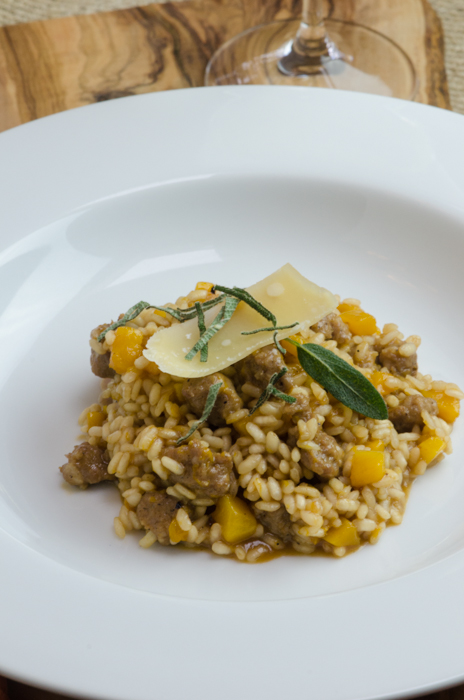 Risotto con Zucca e Salsiccia
Risotto con Zucca e Salsiccia
Serves 4
2 tablespoons extra virgin olive oil
1/2 onion, cut in 1/4” dice
1 pound pumpkin, peeled and cut into 1/4” dice
8 ounces sausage, skin removed and cut into pieces
Kosher salt and freshly ground pepper
6 cups meat stock
1 1/2 cups Vialone Nano rice from Verona (or another risotto rice like Carnaroli or Arborio)
1/2 cup Soave or other dry white wine
Grana cheese, grated or Parmigiano-Reggiano
Sage
Heat the olive oil in a large sauce pan, and gently saute the onion. When slightly browned, add the pumpkin and sausage. Cook for about 5 minutes. Season with salt and pepper.
In a large saucepan, heat the stock, keeping it just below a simmer.
Add the rice to the sauté pan with the pumpkin and sausage. Stir for about 1 minute, until the grains are coated with the fat and liquid in the pan. Add the wine, and simmer slowly, stirring frequently, until it has evaporated.
Add a ladleful of the hot stock and again simmer, stirring gently, until the stock is absorbed. Continue adding the stock a ladleful at a time, stirring and waiting until the stock is absorbed before the next addition of stock. Continue until the rice is al dente. The stock may not all be used.
When the risotto is done, stir in the grana cheese and season with salt to taste. Serve, garnish with the fresh sage.
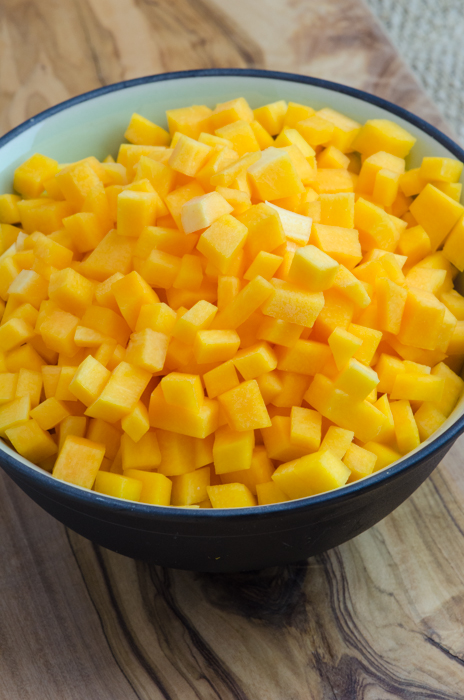
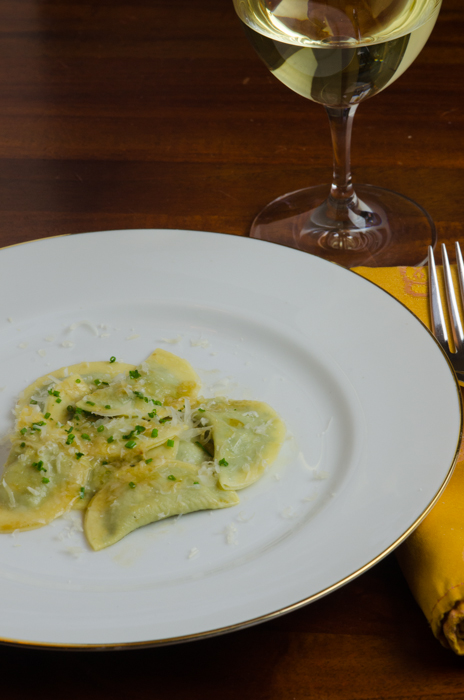 During many of our
During many of our 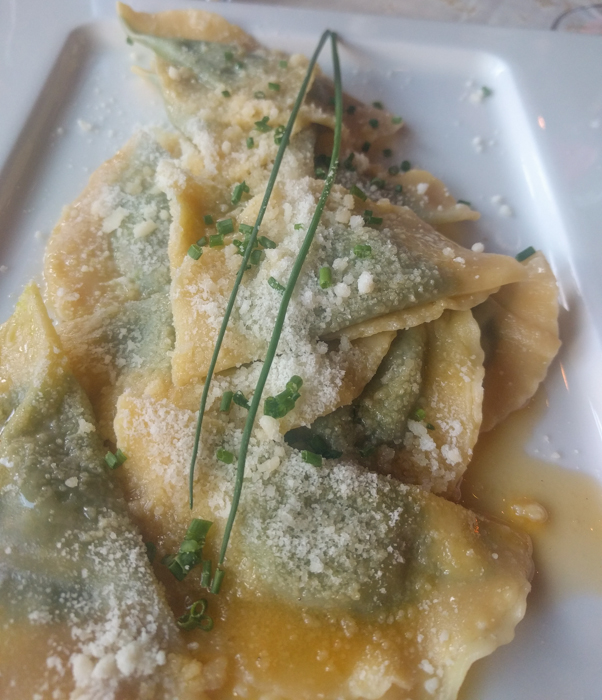 Schlutzkrapfen, called Mezzelune (“half moons”) by the Italian speaking natives of the region, are semi-circular stuffed pasta, similar to ravioli.They are also known as Ravioli della Pusteria, after the Pusteria valley. The dough is usually made of white flour, sometimes mixed with rye or buckwheat flour, mixed with eggs and milk. The fillings may vary, but the most typical is ricotta cheese and spinach. These would often be served during days of abstinence, as a meat free first course. Similar types of pasta found in Northern Italy are the beet stuffed
Schlutzkrapfen, called Mezzelune (“half moons”) by the Italian speaking natives of the region, are semi-circular stuffed pasta, similar to ravioli.They are also known as Ravioli della Pusteria, after the Pusteria valley. The dough is usually made of white flour, sometimes mixed with rye or buckwheat flour, mixed with eggs and milk. The fillings may vary, but the most typical is ricotta cheese and spinach. These would often be served during days of abstinence, as a meat free first course. Similar types of pasta found in Northern Italy are the beet stuffed 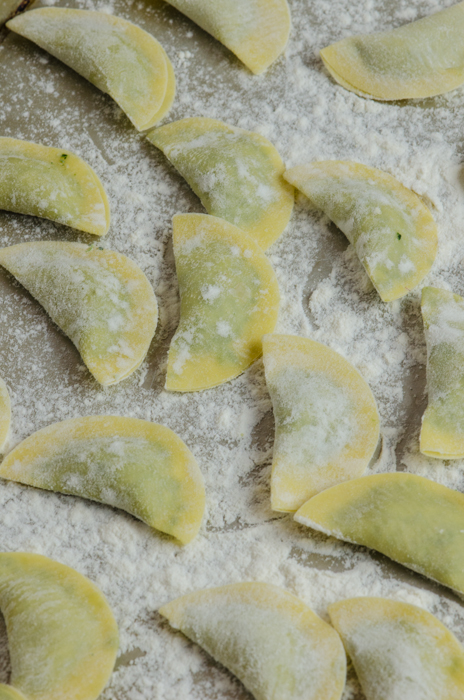 I adapted this recipe from a cookbook put out by the Sudtirol Tourism agency, Alpine Flavors: Authentic recipes from the Dolomites, the Heart of the Alps. Here, they introduced yet another name for this dish, the Ladin name Cajinci t’ega. The Ladin people are an unique ethnic group in northern Italy. Their native language is Ladin, a language related to the Swiss Romansh and Friulian languages. The Ladin people constitute only 4.5% of the population of South Tyrol, but their influence has played a role in the culture, history, and traditions of this region.
I adapted this recipe from a cookbook put out by the Sudtirol Tourism agency, Alpine Flavors: Authentic recipes from the Dolomites, the Heart of the Alps. Here, they introduced yet another name for this dish, the Ladin name Cajinci t’ega. The Ladin people are an unique ethnic group in northern Italy. Their native language is Ladin, a language related to the Swiss Romansh and Friulian languages. The Ladin people constitute only 4.5% of the population of South Tyrol, but their influence has played a role in the culture, history, and traditions of this region.
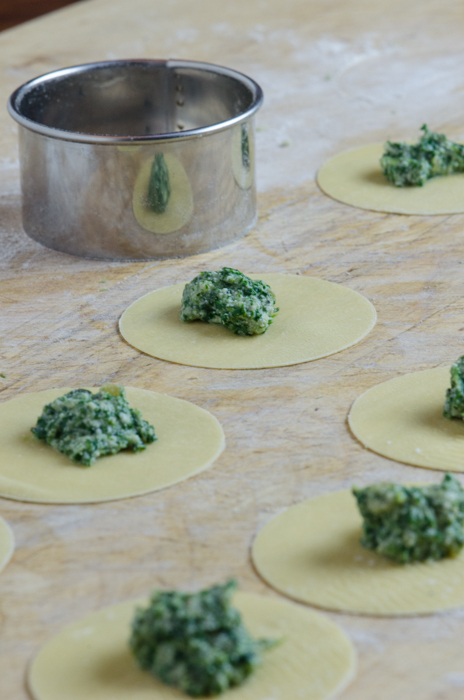 On half of each disc place a teaspoon of filling, fold over the other half and press the edges together well.
On half of each disc place a teaspoon of filling, fold over the other half and press the edges together well.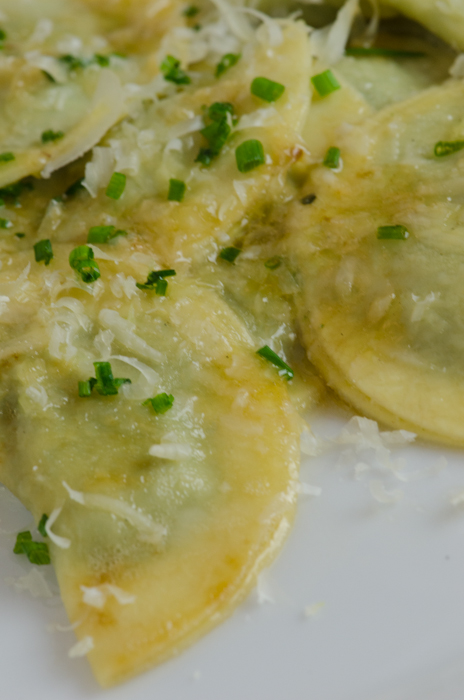
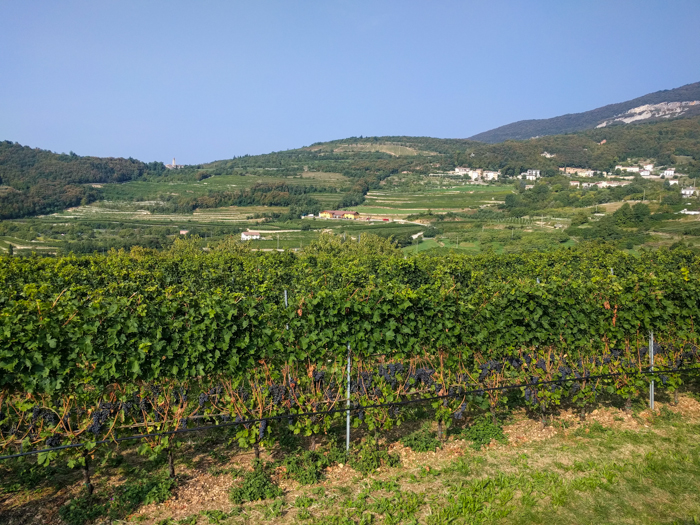 There is no better way to appreciate the terroir of a wine than to walk through it. On our private walking tours in Italy we typically plan a day to do just this – choosing a route that brings us through the countryside and vineyards to a winery where we learn how they create amazing wines from their picturesque surroundings – the soil, the vines, the climate, the grapes. This season we spent a day walking up in the hills of
There is no better way to appreciate the terroir of a wine than to walk through it. On our private walking tours in Italy we typically plan a day to do just this – choosing a route that brings us through the countryside and vineyards to a winery where we learn how they create amazing wines from their picturesque surroundings – the soil, the vines, the climate, the grapes. This season we spent a day walking up in the hills of 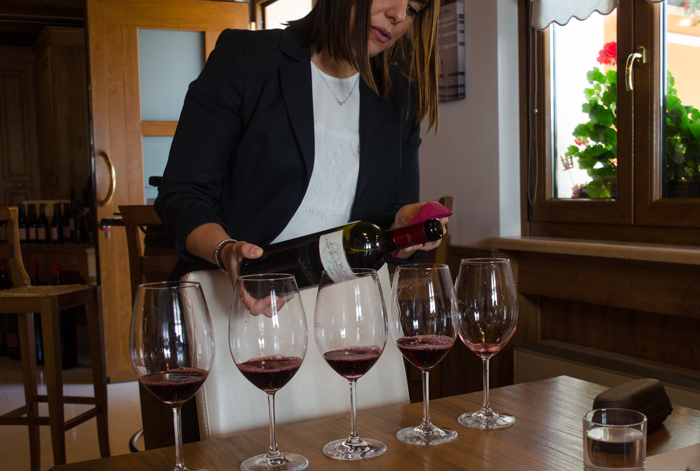 Gaetano Accordini, helped by his wife Giuseppina Bertani, opened the winery in the early 1900s when he purchased 5 acres of land in the town of Negar. HIs son Stefano continued the business, producing Valpolicella wine for the local market. Stefano’s sons Tiziano and Daniele continued the business through the 1970s, when lower quality Valpolicella wines flooded the market, and the business struggled to remain profitable. Daniele remained committed to producing quality wines, planting new installations of Corvina, Corvinone, Rondinella and Molinara, decreased yields per hectare, and modernizing the cellar and wine production process. Today the fourth generation is carrying on the family tradition, with Giacomo overseeing viticulture, Paolo caring for all stages of vinification, aging and bottling, and Marco currently a student of Agronomy and Enology.
Gaetano Accordini, helped by his wife Giuseppina Bertani, opened the winery in the early 1900s when he purchased 5 acres of land in the town of Negar. HIs son Stefano continued the business, producing Valpolicella wine for the local market. Stefano’s sons Tiziano and Daniele continued the business through the 1970s, when lower quality Valpolicella wines flooded the market, and the business struggled to remain profitable. Daniele remained committed to producing quality wines, planting new installations of Corvina, Corvinone, Rondinella and Molinara, decreased yields per hectare, and modernizing the cellar and wine production process. Today the fourth generation is carrying on the family tradition, with Giacomo overseeing viticulture, Paolo caring for all stages of vinification, aging and bottling, and Marco currently a student of Agronomy and Enology.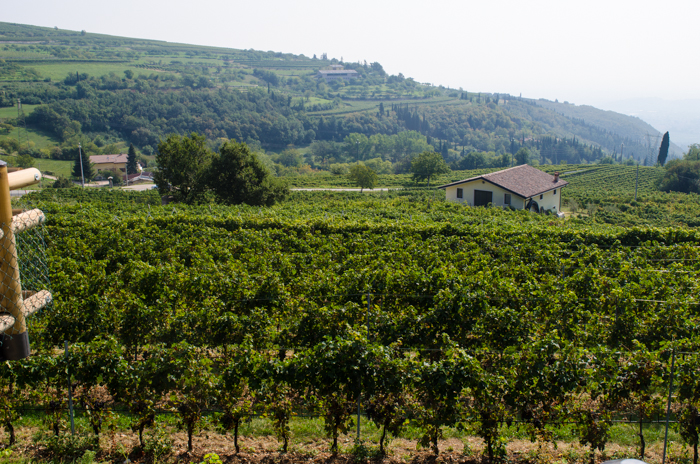 In 1999, the family purchased an additional 10 acres in the hills of Fumane, in the village of Cavalo. The most favorably situated vineyards in the classico zone are located in the Monti Lessini foothills, where the grapes ripen at altitudes between 150–460 meters. The vineyards of Accordini are located between 500 and 600m, making them the highest vineyards in the area. The higher elevation means lower temperatures, concentrated sun exposure, and a large temperature differential between night and day.
In 1999, the family purchased an additional 10 acres in the hills of Fumane, in the village of Cavalo. The most favorably situated vineyards in the classico zone are located in the Monti Lessini foothills, where the grapes ripen at altitudes between 150–460 meters. The vineyards of Accordini are located between 500 and 600m, making them the highest vineyards in the area. The higher elevation means lower temperatures, concentrated sun exposure, and a large temperature differential between night and day.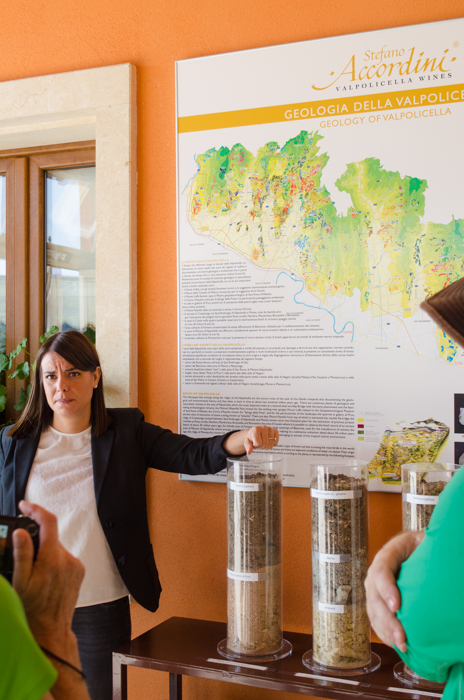 After a lovely walk up through the vineyards to the winery above Fumane, we enjoyed a private tour of the cellars. Alessandra warmly greeted us, then introduced us to the unique terroir of the region, showing samples of the various soil types, from morainic gravel near Lake Garda to more dolomite residual gravel with alluvial deposits. Alessandra tells us how many areas have tried to cultivate Valpolicella’s most important grape, Corvina, but the results have not lived up to the quality achieved here.
After a lovely walk up through the vineyards to the winery above Fumane, we enjoyed a private tour of the cellars. Alessandra warmly greeted us, then introduced us to the unique terroir of the region, showing samples of the various soil types, from morainic gravel near Lake Garda to more dolomite residual gravel with alluvial deposits. Alessandra tells us how many areas have tried to cultivate Valpolicella’s most important grape, Corvina, but the results have not lived up to the quality achieved here.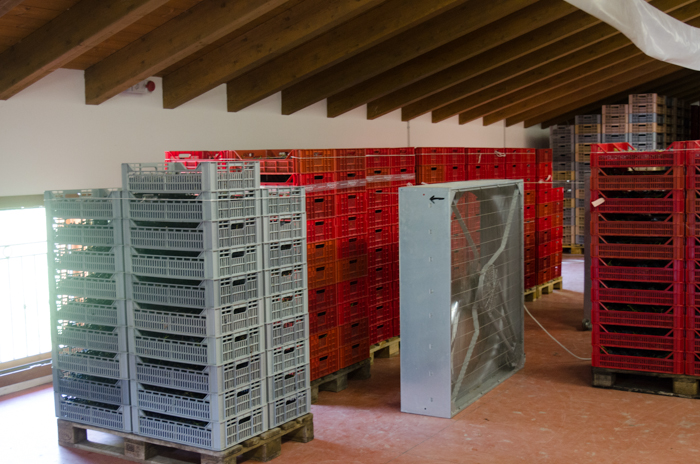 Then we moved to the drying loft, our late September tour the perfect time to visit as it is during harvest and we see how the grapes are layed out on pallets and stacked to dry. The grapes destined to become Amarone dry for 3 months, for Recioto, 4. DOC regulations dictate what percentage of grapes can go into Amarone, typically 50% in a good year, like 2015. In 2014, a bad year with too much rain, only 35% of grapes could be used. During the drying process, the grapes loose 35 to 40 percent weight. One bottle of Amarone requires 5 kilos of grapes, over 10 pounds!
Then we moved to the drying loft, our late September tour the perfect time to visit as it is during harvest and we see how the grapes are layed out on pallets and stacked to dry. The grapes destined to become Amarone dry for 3 months, for Recioto, 4. DOC regulations dictate what percentage of grapes can go into Amarone, typically 50% in a good year, like 2015. In 2014, a bad year with too much rain, only 35% of grapes could be used. During the drying process, the grapes loose 35 to 40 percent weight. One bottle of Amarone requires 5 kilos of grapes, over 10 pounds!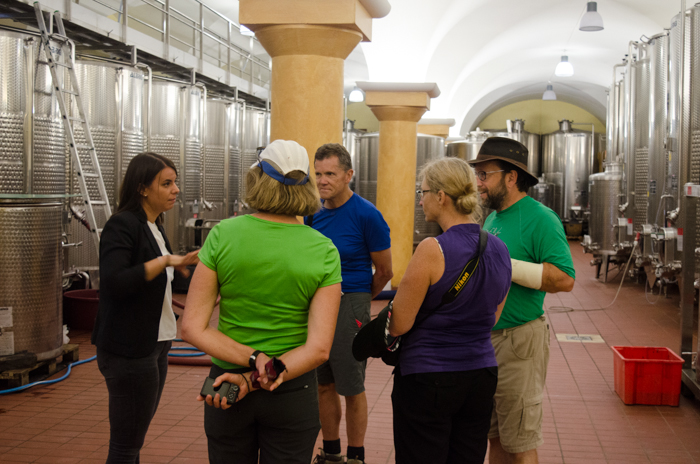 Off to the cellar, where we learned the different processes for each wine. The ‘basic’ Valpolicella is produced in typical red wine fashion – harvested grapes are pressed, yeast is usually added, and the juice and skins/pulp sit and ferment. Fermentation continues until the sugar in the grapes is converted into alcohol and CO2, the skins/pulp (called lees) is removed, and the wine is placed in either stainless steel tanks or wood barrels – or both – to age. For the Valpolicella Classico, a fresh wine meant to be enjoyed young, it is aged in stainless steel tanks, with an additional two months in the bottle.
Off to the cellar, where we learned the different processes for each wine. The ‘basic’ Valpolicella is produced in typical red wine fashion – harvested grapes are pressed, yeast is usually added, and the juice and skins/pulp sit and ferment. Fermentation continues until the sugar in the grapes is converted into alcohol and CO2, the skins/pulp (called lees) is removed, and the wine is placed in either stainless steel tanks or wood barrels – or both – to age. For the Valpolicella Classico, a fresh wine meant to be enjoyed young, it is aged in stainless steel tanks, with an additional two months in the bottle.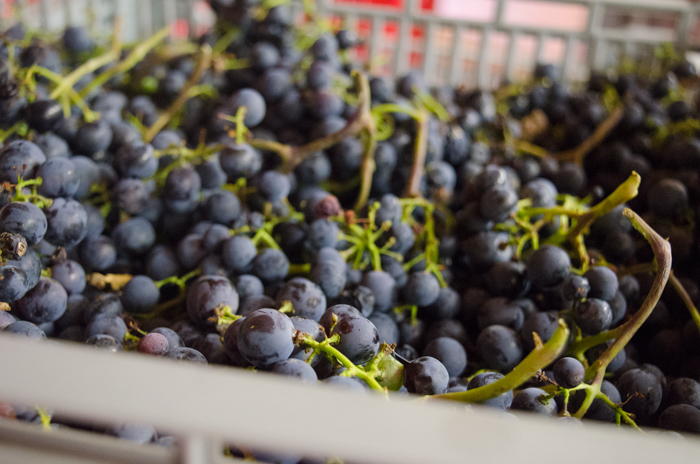 For Amarone, the best grapes are picked, then dried in the loft for 3 months, which concentrates the sugars. The grapes are pressed, yeast is added, and fermentation occurs. The higher sugar content means more alcohol is produced, and a special strain of yeast must be used, to withstand the higher alcohol content. After this maceration, which lasts about 35 days, the juice is the filtered off from the lees, then off to the aging rooms. The Amarone is refined in new French oak barriques for 24 months, then in bottles for a additional 8 months.
For Amarone, the best grapes are picked, then dried in the loft for 3 months, which concentrates the sugars. The grapes are pressed, yeast is added, and fermentation occurs. The higher sugar content means more alcohol is produced, and a special strain of yeast must be used, to withstand the higher alcohol content. After this maceration, which lasts about 35 days, the juice is the filtered off from the lees, then off to the aging rooms. The Amarone is refined in new French oak barriques for 24 months, then in bottles for a additional 8 months.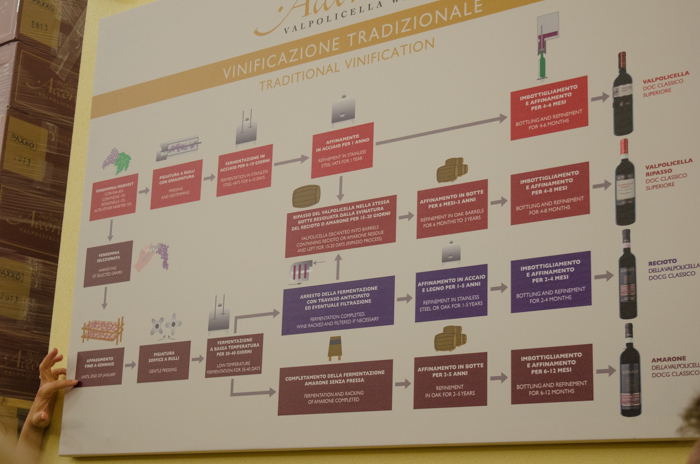 The lees from the Amarone are not disposed of quite yet. Instead, they are put to use in yet a third style of dry red wine made in this region, a Valpolicella Ripasso. Some of the Valpolicella wine mentioned previously is pulled off, placed on the leftover lees from the Amarone for about 10 days, allowing a second fermentation occurs. The Ripasso is aged in barriques of French Oak for 12 months, then six other months in bottle. The resulting wine offers a bit more structure and complexity than the Valpolicella.
The lees from the Amarone are not disposed of quite yet. Instead, they are put to use in yet a third style of dry red wine made in this region, a Valpolicella Ripasso. Some of the Valpolicella wine mentioned previously is pulled off, placed on the leftover lees from the Amarone for about 10 days, allowing a second fermentation occurs. The Ripasso is aged in barriques of French Oak for 12 months, then six other months in bottle. The resulting wine offers a bit more structure and complexity than the Valpolicella.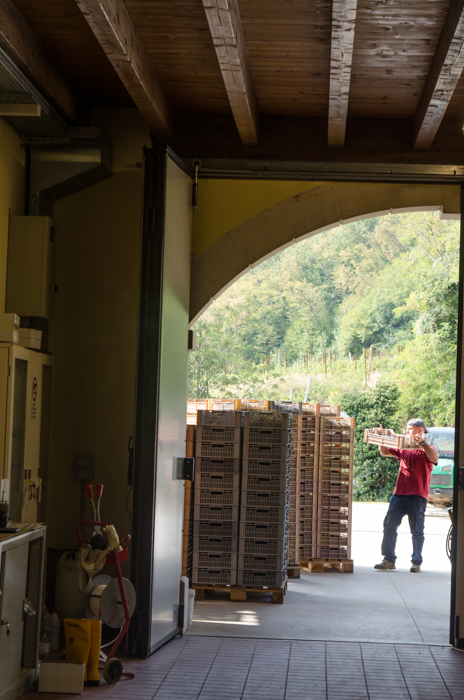 Finally, the Recioto dessert wine – this is produced using the same method as the Amarone, but the fermentation Is halted earlier, after only about 20 days, when some residual sugar still remains. The Recioto is refined in barriques for 4 months, then in bottles for 3 months.
Finally, the Recioto dessert wine – this is produced using the same method as the Amarone, but the fermentation Is halted earlier, after only about 20 days, when some residual sugar still remains. The Recioto is refined in barriques for 4 months, then in bottles for 3 months.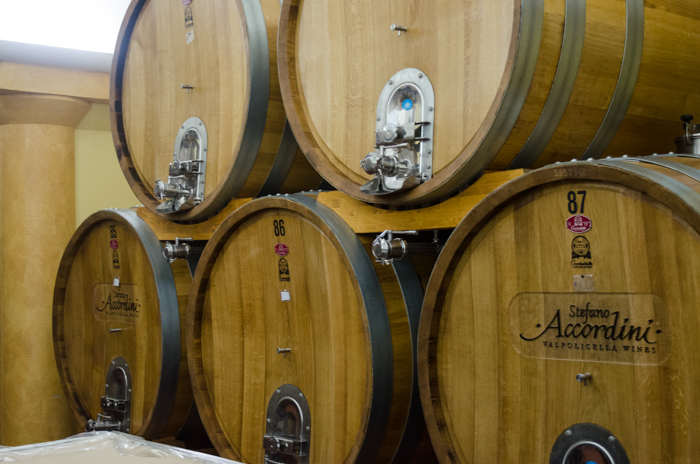 Finally, the moment we’ve been waiting for – the tasting! We tasted all four of the aforementioned wines, three from their Acinatico line. Acinatico is ancient Roman name for wines of this area. The first reference to this wine goes back to the 5th century A.D. in a letter of Cassiodoro, minister of king Theodoric, who was looking for red “Acinatico” for the royal meals. This was a red wine made during the winter months with wilted grapes; it was very difficult to get, at least in large quantities and was produced in the hills around Verona.
Finally, the moment we’ve been waiting for – the tasting! We tasted all four of the aforementioned wines, three from their Acinatico line. Acinatico is ancient Roman name for wines of this area. The first reference to this wine goes back to the 5th century A.D. in a letter of Cassiodoro, minister of king Theodoric, who was looking for red “Acinatico” for the royal meals. This was a red wine made during the winter months with wilted grapes; it was very difficult to get, at least in large quantities and was produced in the hills around Verona.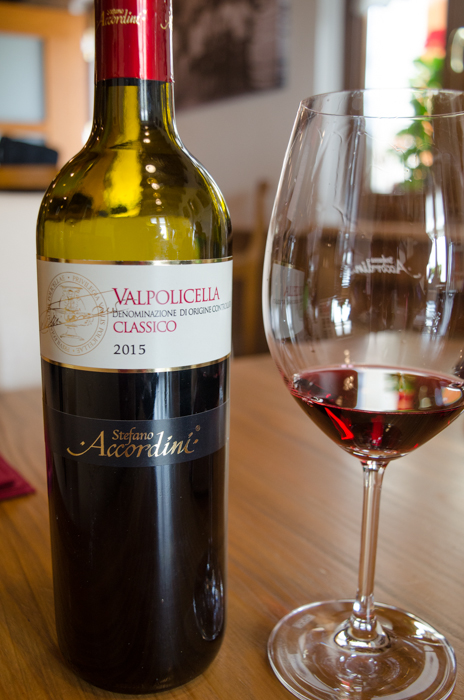 Bright ruby red with hints of violet. Very fresh and fruity, cherries and berries. Medium body, it should be enjoyed while young to appreciate it at its best. A versitile food wine, it is recommended with first courses and soups.
Bright ruby red with hints of violet. Very fresh and fruity, cherries and berries. Medium body, it should be enjoyed while young to appreciate it at its best. A versitile food wine, it is recommended with first courses and soups.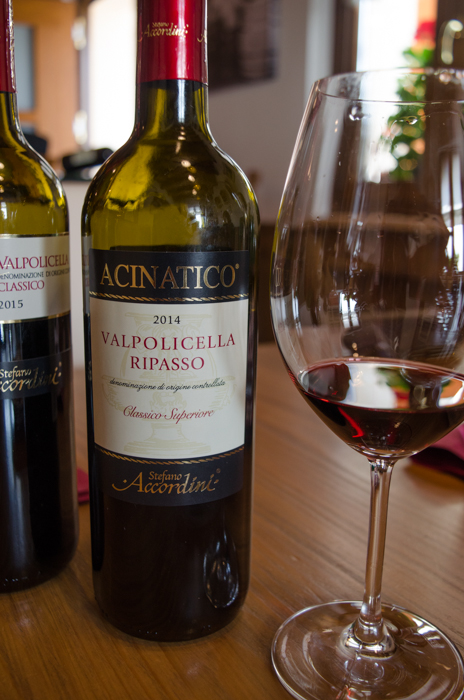 Corvina Veronese (60%), Corvinone (15%), Rondinella (20%), Molinara (5%).
Corvina Veronese (60%), Corvinone (15%), Rondinella (20%), Molinara (5%).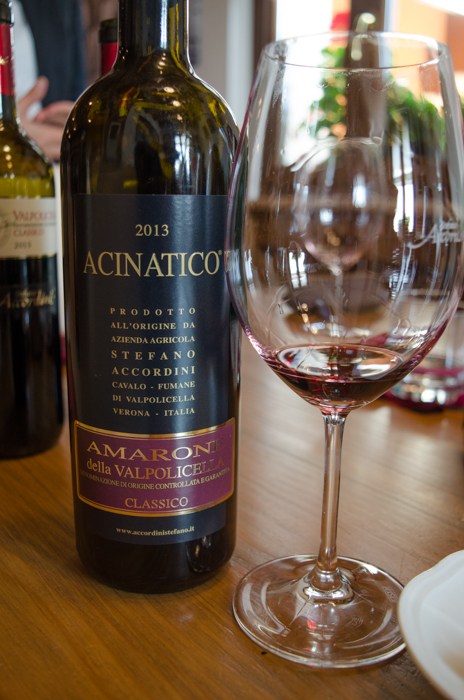 Corvina Veronese (75%), Rondinella (20%), Molinara (5%)
Corvina Veronese (75%), Rondinella (20%), Molinara (5%)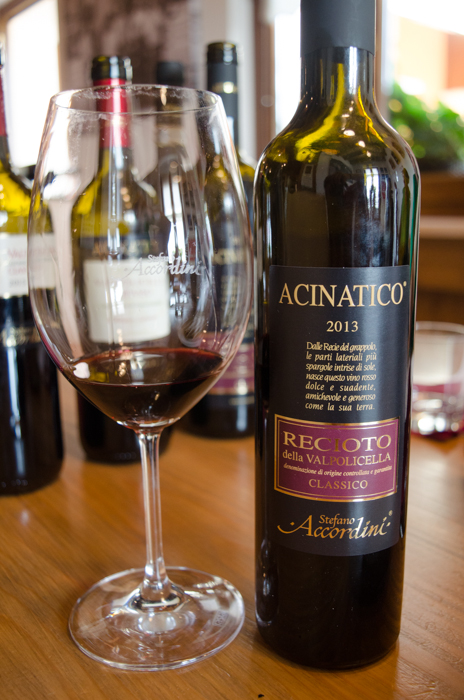 Corvina Veronese 75%, Rondinella 20%, Molinara 5%
Corvina Veronese 75%, Rondinella 20%, Molinara 5%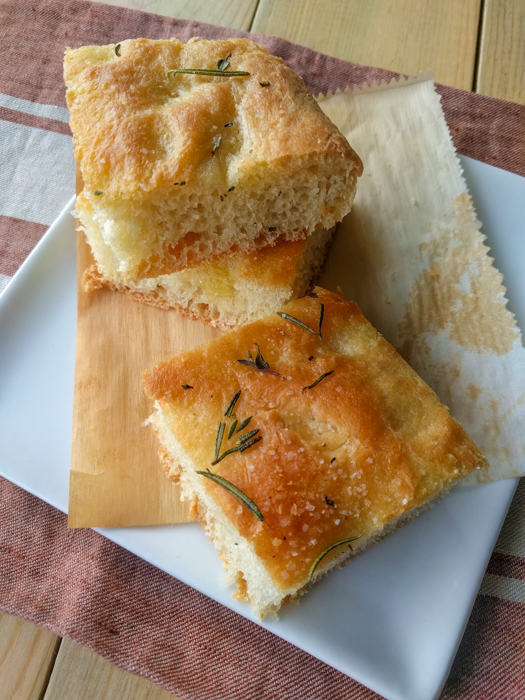 Who doesn’t love focaccia? A leavened flat bread with seemingly unlimited variations, everyone can find a favorite. This season as we visited Vicenza on a
Who doesn’t love focaccia? A leavened flat bread with seemingly unlimited variations, everyone can find a favorite. This season as we visited Vicenza on a 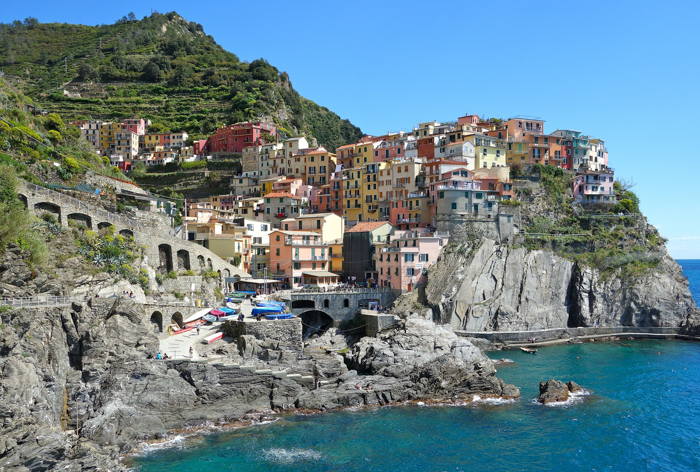 Today focaccia is found throughout the Italian peninsula, but it is primarily associated with Ligurian cuisine, as the olive oil in the bread helps keep it from spoiling quickly in the salt air and humidity of this coastal region. As we enjoy a
Today focaccia is found throughout the Italian peninsula, but it is primarily associated with Ligurian cuisine, as the olive oil in the bread helps keep it from spoiling quickly in the salt air and humidity of this coastal region. As we enjoy a 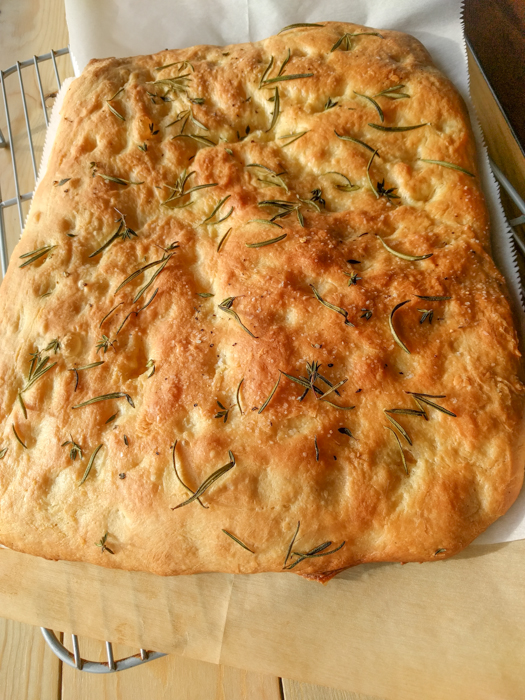 Some versions are fluffy and cake-like, thanks to a bit of potato in the dough. The other extreme may be the Focaccia col Formaggio (“focaccia with cheese”) from Recco, near Genoa. This version bears little resemblance to what we know as focaccia, consisting of a cheese filling sandwiched between two layers of paper-thin dough. It is being considered for European Union PGI status.
Some versions are fluffy and cake-like, thanks to a bit of potato in the dough. The other extreme may be the Focaccia col Formaggio (“focaccia with cheese”) from Recco, near Genoa. This version bears little resemblance to what we know as focaccia, consisting of a cheese filling sandwiched between two layers of paper-thin dough. It is being considered for European Union PGI status.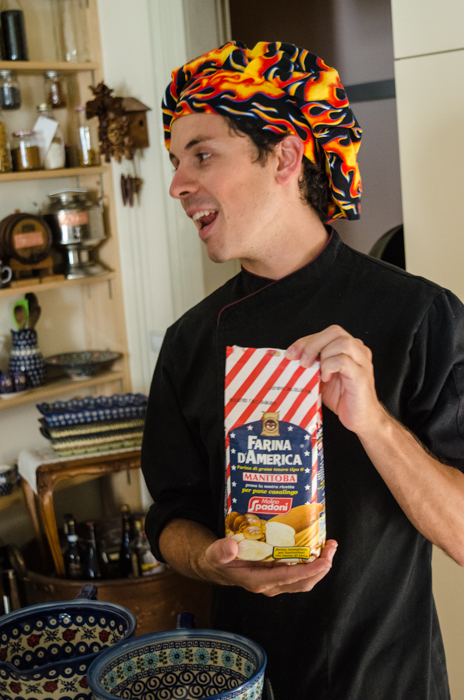 Below is the recipe we made with Luca in our cooking classes (here is a
Below is the recipe we made with Luca in our cooking classes (here is a 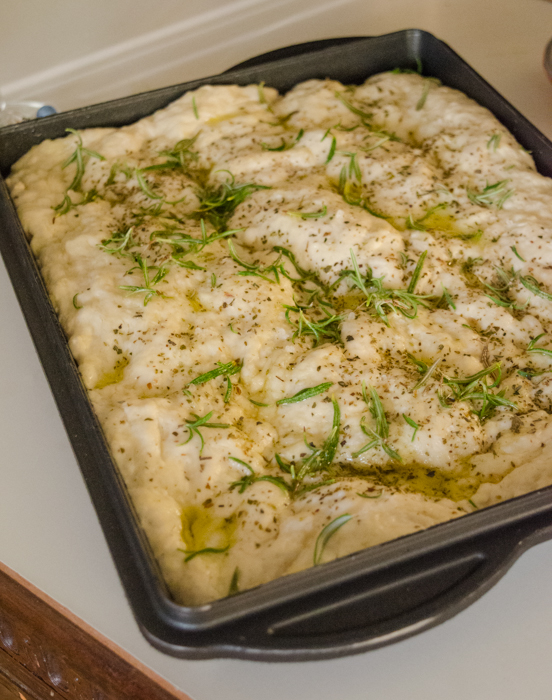 Focaccia con Rosemarino
Focaccia con Rosemarino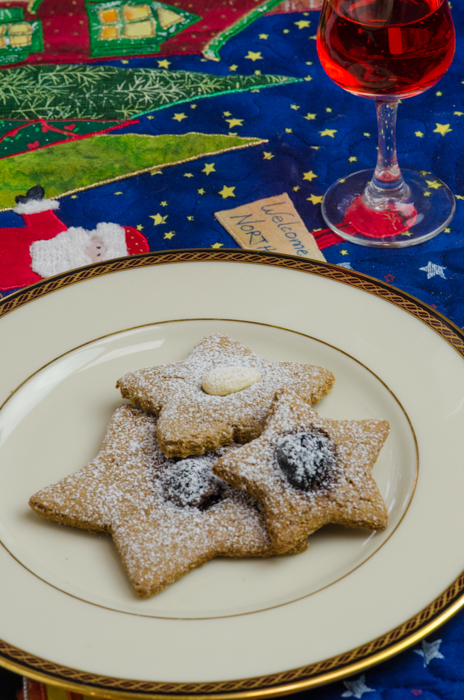 Lebkuchen is a traditional German baked Christmas treat, similar to gingerbread. It is a classic Chrismas treat in the Trentino-Alto Adige region of Italy, reflecting the area’s history as part the Austrian-Hungarian Empire until after World War I.
Lebkuchen is a traditional German baked Christmas treat, similar to gingerbread. It is a classic Chrismas treat in the Trentino-Alto Adige region of Italy, reflecting the area’s history as part the Austrian-Hungarian Empire until after World War I.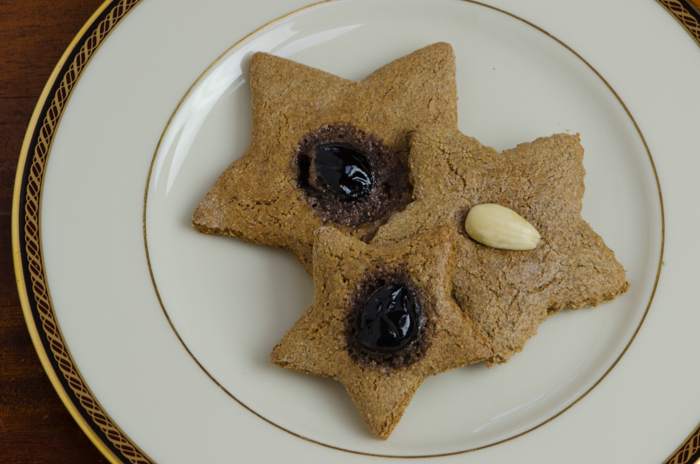 There are many traditional German recipes for this treat, but I worked with several specifically from Sudtirol. The main source for this recipe is a book put out by the Sudtirol Tourism Office entitled “Alpine Flavors – Authentic recipes from the Dolomites, the heart of the Alps”. Not only does this have recipes from some of my best-loved regional dishes, but there are plenty of wonderful photos of this spectacular area, a favorite destination for both our
There are many traditional German recipes for this treat, but I worked with several specifically from Sudtirol. The main source for this recipe is a book put out by the Sudtirol Tourism Office entitled “Alpine Flavors – Authentic recipes from the Dolomites, the heart of the Alps”. Not only does this have recipes from some of my best-loved regional dishes, but there are plenty of wonderful photos of this spectacular area, a favorite destination for both our 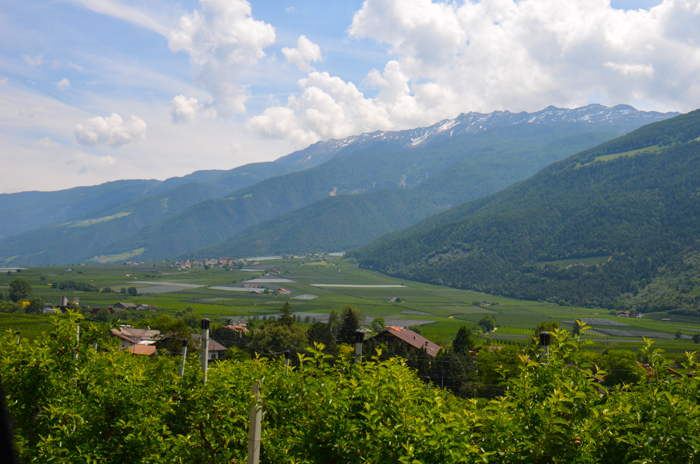 In addition to this source recipe, I found several other versions from Sudtirol that call for rye flour. Rye is native to the northernmost regions in Italy, from the Valtellina valley in Lombardy, near Alanga in Val d’Aosta, and is still used extensively in Trentino-Alto Adige, thanks to the regions Austrian heritage. The valleys and farmsteads of this region are found at relatively high altitudes and rye was the grain that adapted best to these conditions.
In addition to this source recipe, I found several other versions from Sudtirol that call for rye flour. Rye is native to the northernmost regions in Italy, from the Valtellina valley in Lombardy, near Alanga in Val d’Aosta, and is still used extensively in Trentino-Alto Adige, thanks to the regions Austrian heritage. The valleys and farmsteads of this region are found at relatively high altitudes and rye was the grain that adapted best to these conditions.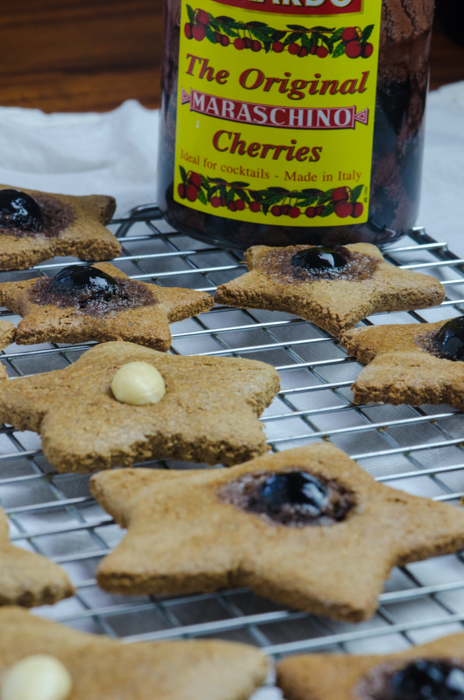 The many recipes I researched called for vastly different amounts of flour, ranging from very wet batters that are spooned out onto little non-stick paper disks to dough that is rolled out and cut with cookie cutters. This recipe is the latter; rye flour is low in gluten and makes a sticky dough. Keep the mixer on low speed so the strands of gluten you do get don’t break. I’ve suggested a range of flour amounts, start low and add flour until you get a consistency that you can roll out. The final amount will depend upon the size of your eggs, the type of rye flour, and the relative humidity.
The many recipes I researched called for vastly different amounts of flour, ranging from very wet batters that are spooned out onto little non-stick paper disks to dough that is rolled out and cut with cookie cutters. This recipe is the latter; rye flour is low in gluten and makes a sticky dough. Keep the mixer on low speed so the strands of gluten you do get don’t break. I’ve suggested a range of flour amounts, start low and add flour until you get a consistency that you can roll out. The final amount will depend upon the size of your eggs, the type of rye flour, and the relative humidity.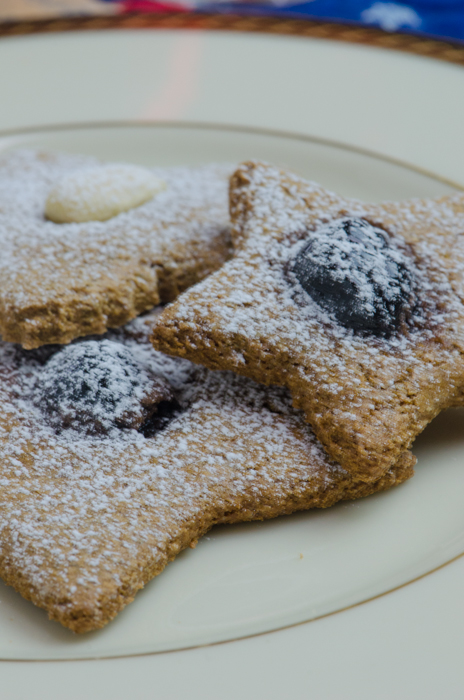 According to “Alpine Flavors”, “Christmas Eve is an excellent time to enjoy the lebkuchen with a Moscato Rosa: the wine will glisten in the glasses at least as brightly as the Christmas tree decorations or every child’s spellbound eyes.” When Prince Henry of Campofranco moved from Sicily to Caldaro in 1851, he brought cuttings of Moscato Rosa along with him. Today, this grape is used to produce a full-bodied, aromatic, and complex dessert wine with its intense perfume of roses. Moscato Rosa is temperamental to grow and produces only minimal yields of naturally sweet grapes that are fermented like a red wine, producing a bright naturally sweet rose wine when the grapes are ripened appropriately.
According to “Alpine Flavors”, “Christmas Eve is an excellent time to enjoy the lebkuchen with a Moscato Rosa: the wine will glisten in the glasses at least as brightly as the Christmas tree decorations or every child’s spellbound eyes.” When Prince Henry of Campofranco moved from Sicily to Caldaro in 1851, he brought cuttings of Moscato Rosa along with him. Today, this grape is used to produce a full-bodied, aromatic, and complex dessert wine with its intense perfume of roses. Moscato Rosa is temperamental to grow and produces only minimal yields of naturally sweet grapes that are fermented like a red wine, producing a bright naturally sweet rose wine when the grapes are ripened appropriately.